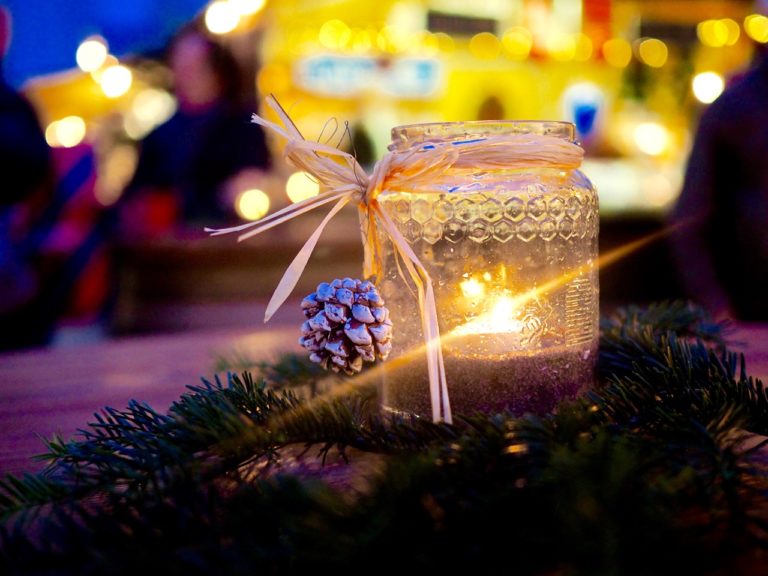Is Durnstein The Cutest Village in Austria?
Looking at the dreary weather from my cosy Viking Cruises stateroom, I seriously pondered whether I should even bother going on the excursion. The heavy fog that would, unbeknownst to me at the time, be a constant feature on my week-long Danube cruise, had just reached epic thickness.
Isn’t the whole point of excursions to see a destination? I knew very well there wouldn’t be a whole lot of seeing that morning, but I went on ahead anyway because who knows when I would get to visit this teeny tiny Austrian village again? Life’s short. Be bold. Or something like that.
The Absolutely Idyllic Village of Durnstein
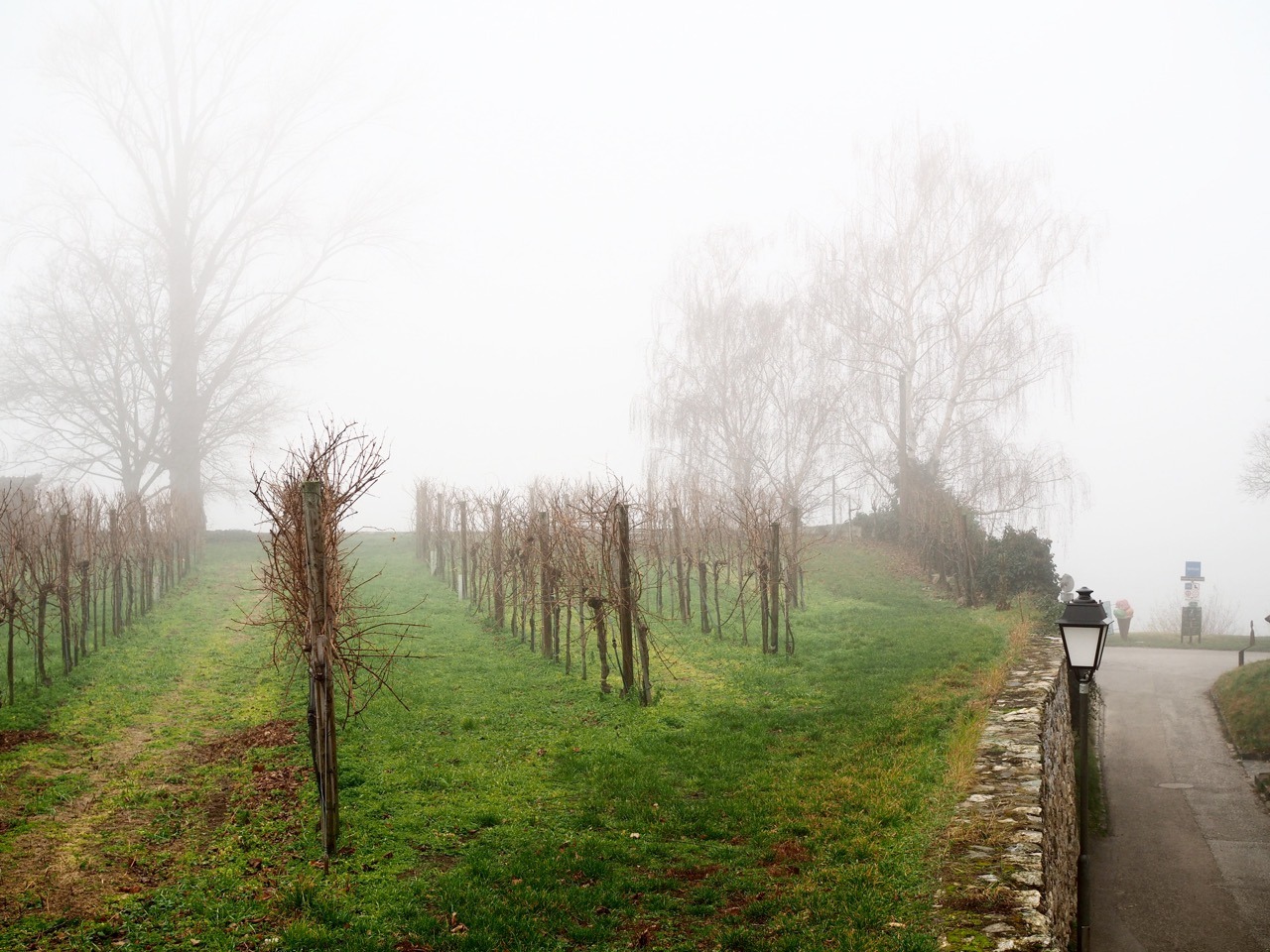
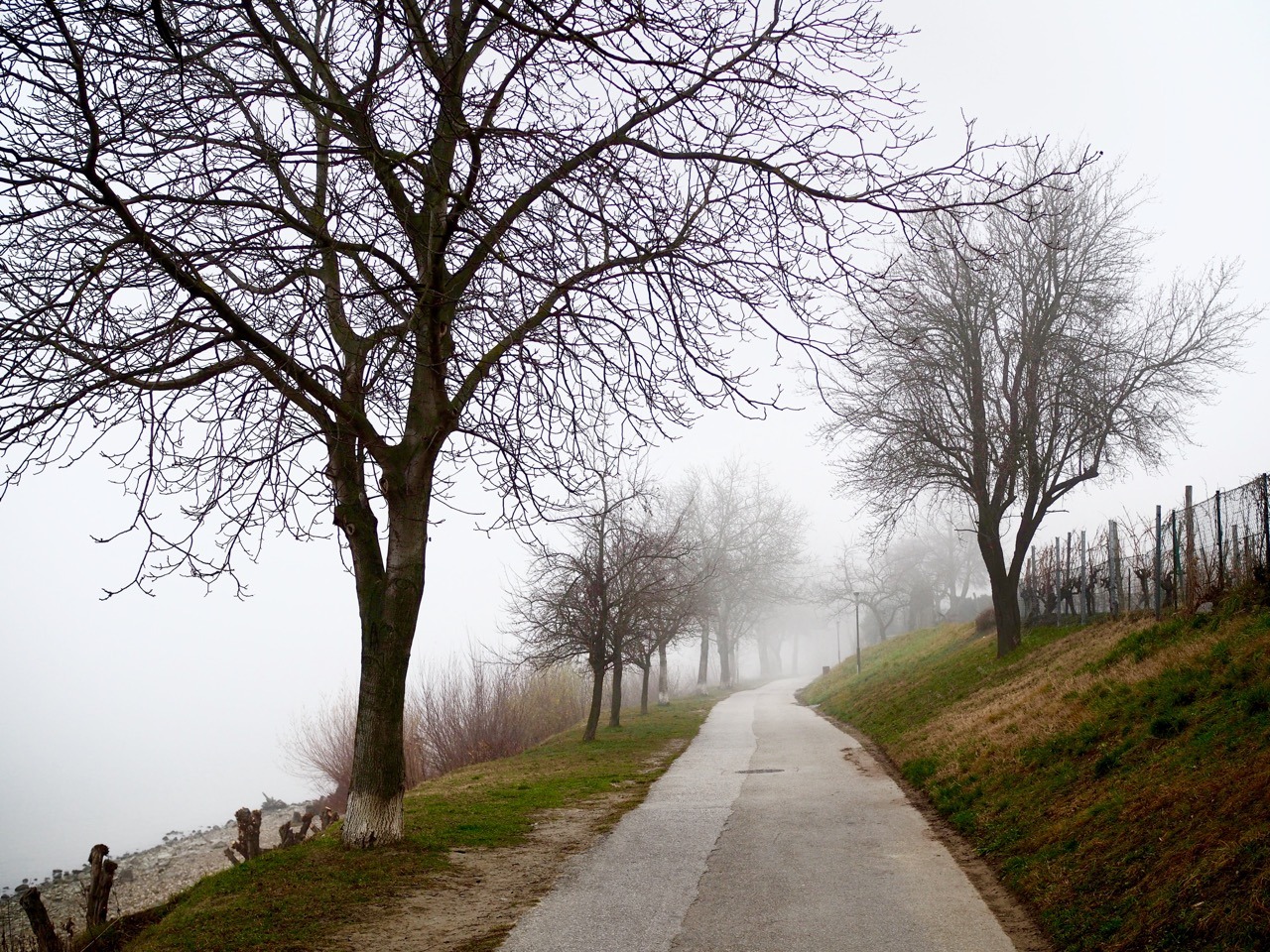 [col1]
[col1] [/col1][col2]
[/col1][col2]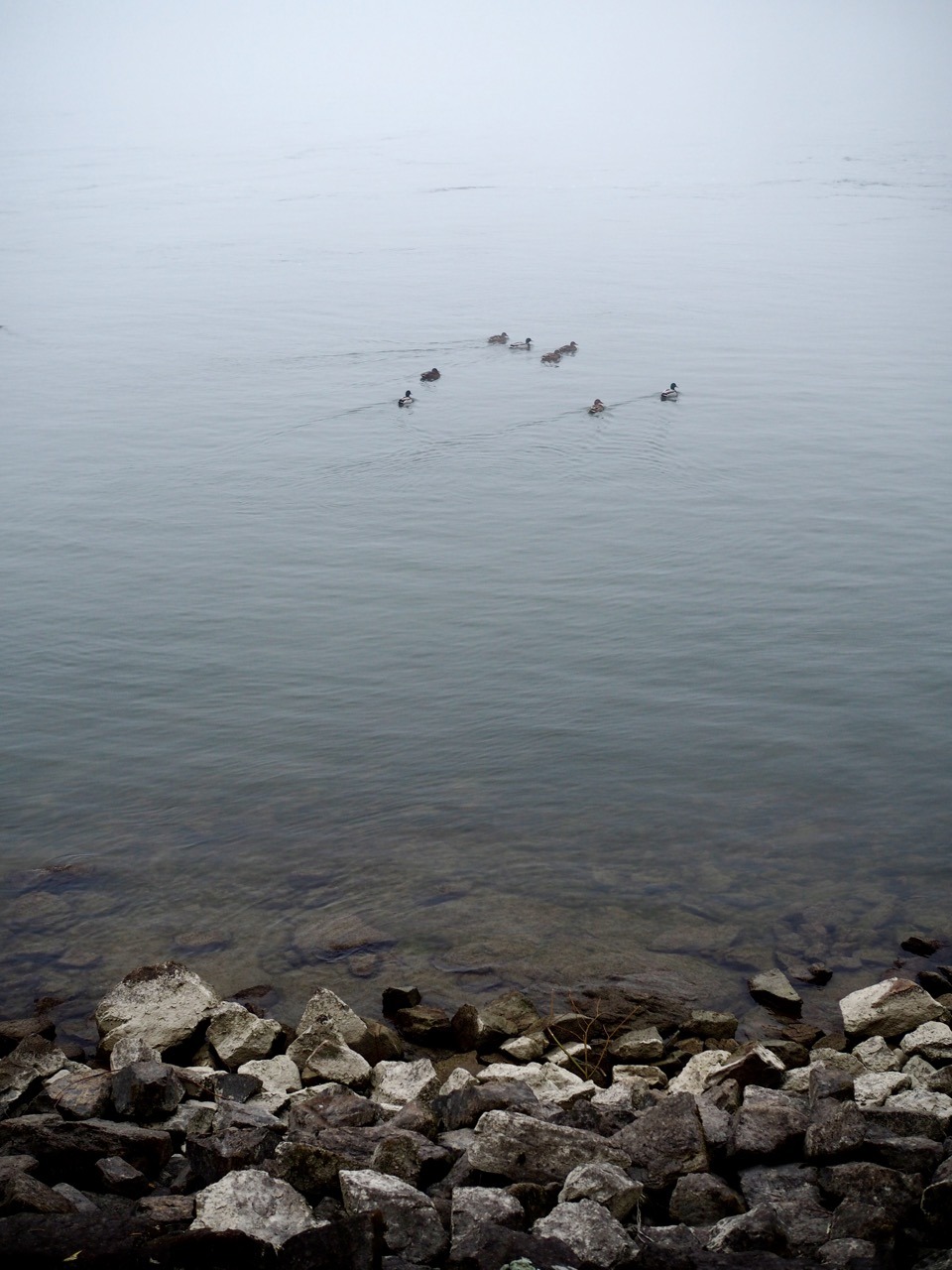 [/col2][col3]
[/col2][col3] [/col3]
[/col3]
Durnstein is, admittedly, a popular stop on many Danube river cruises. Situated on a curve in the Danube right ahead of the picturesque Wachau Valley, Durnstein is famous for being not only being one of the most beautiful villages in Austria but also for being home to a stunning abbey and the Kuenringerburg Castle ruins, which are both complemented by romantic 16th-century houses.
The fog’s game was quite strong along the river itself, but luckily, it didn’t reach the heights of the village – which I almost had all to myself. And what a beauty it was!
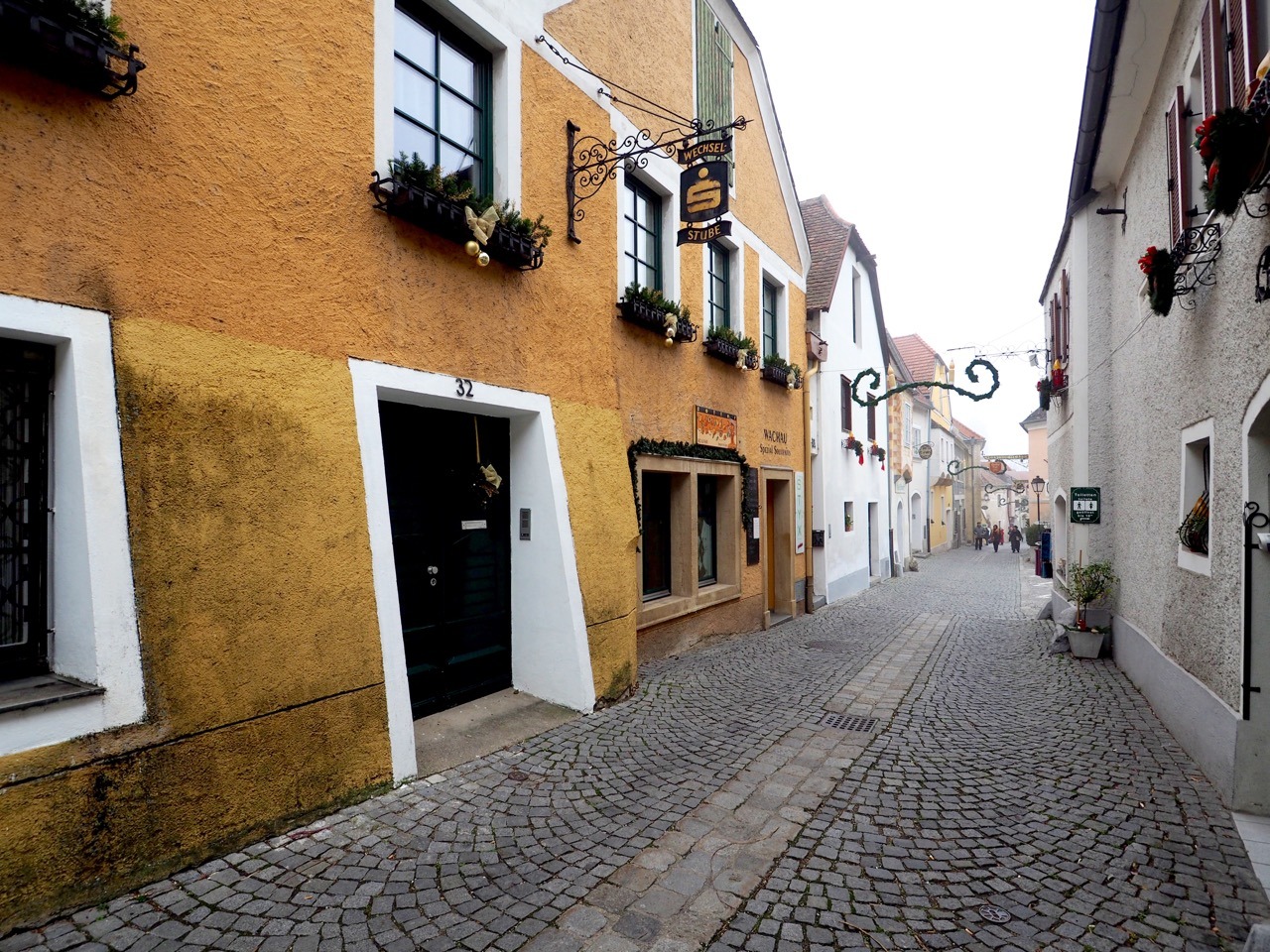

 [left]
[left] [/left][right]
[/left][right] [/right]
[/right]

There isn’t a whole lot to be said about Durnstein besides how quaint and photogenic it is, even in the dead of December. I’ve been told that summer is the best time to visit, however, and not just in terms of weather: indeed, Durnstein is one of Austria’s top-rated wine and apricot growing regions, making it one of the most visited spots in the Wachau Valley on sunny days thanks to gentle hills dotted with vineyards and mature forests.
What my visit lacked in touristy highlights it made up in romanticism and photogenicism; I replaced breathtaking views by cake-fueled pitstops, and, honestly, that’s not something you’ll see me complain about anytime soon. To my knowledge, Durnstein doesn’t have a Christmas market (which was, after all, the theme of the river cruise I was on) but it does have several artisan shops where you can get apricot-based delicacies and gourmet products, as well as wine and spirits. I ended up buying several of my Christmas presents there!
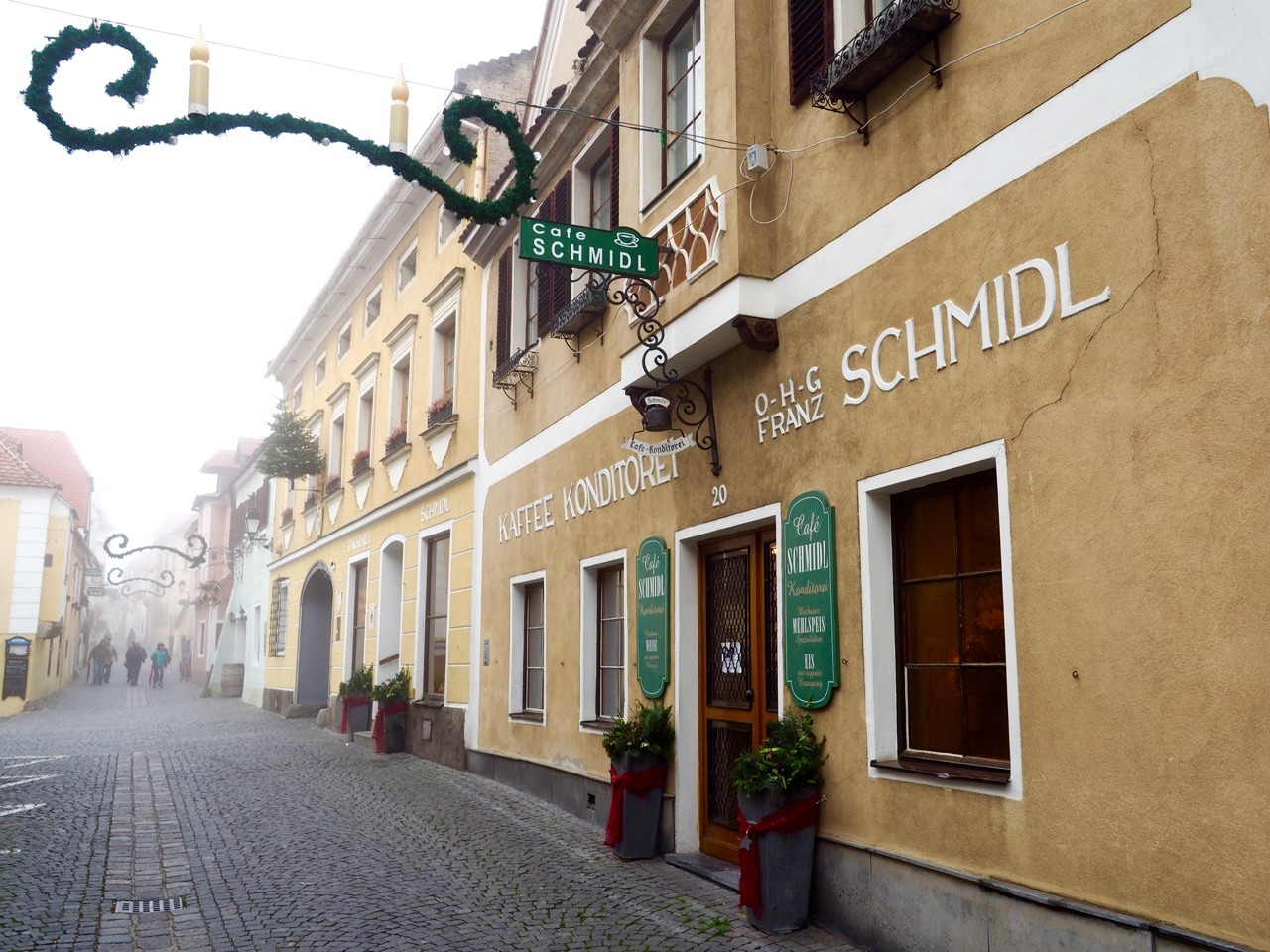
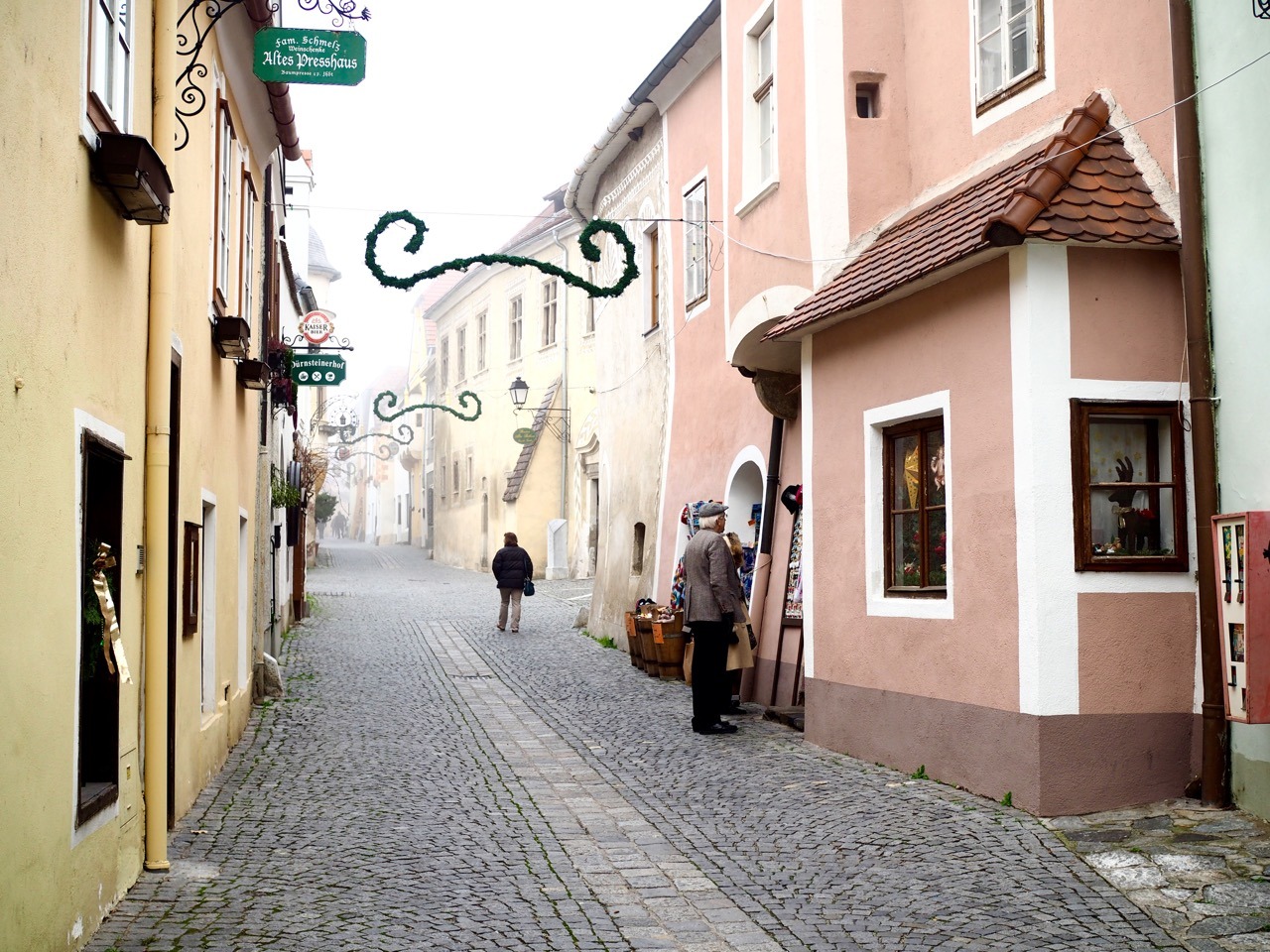

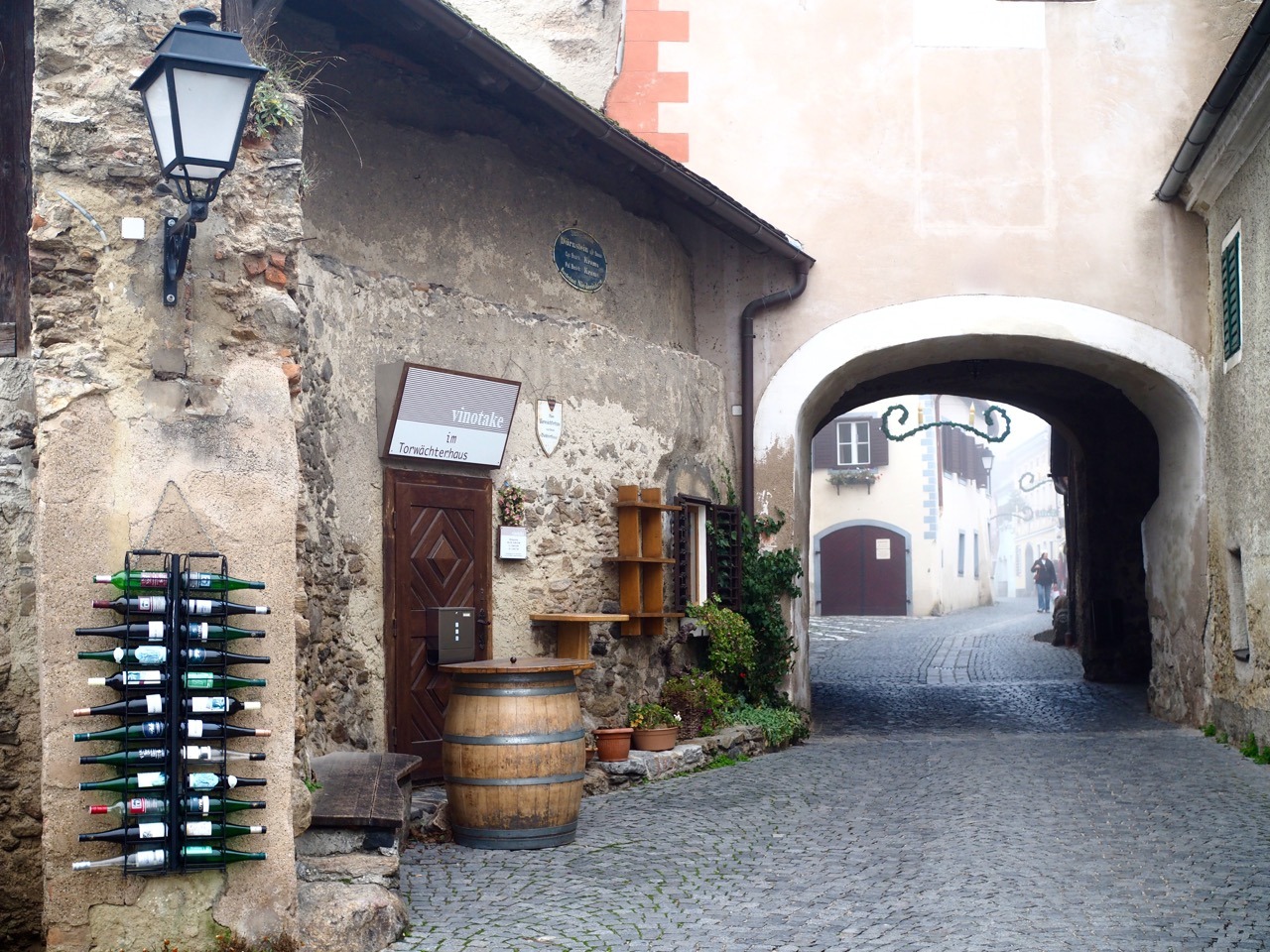 [left]
[left] [/left][right]
[/left][right]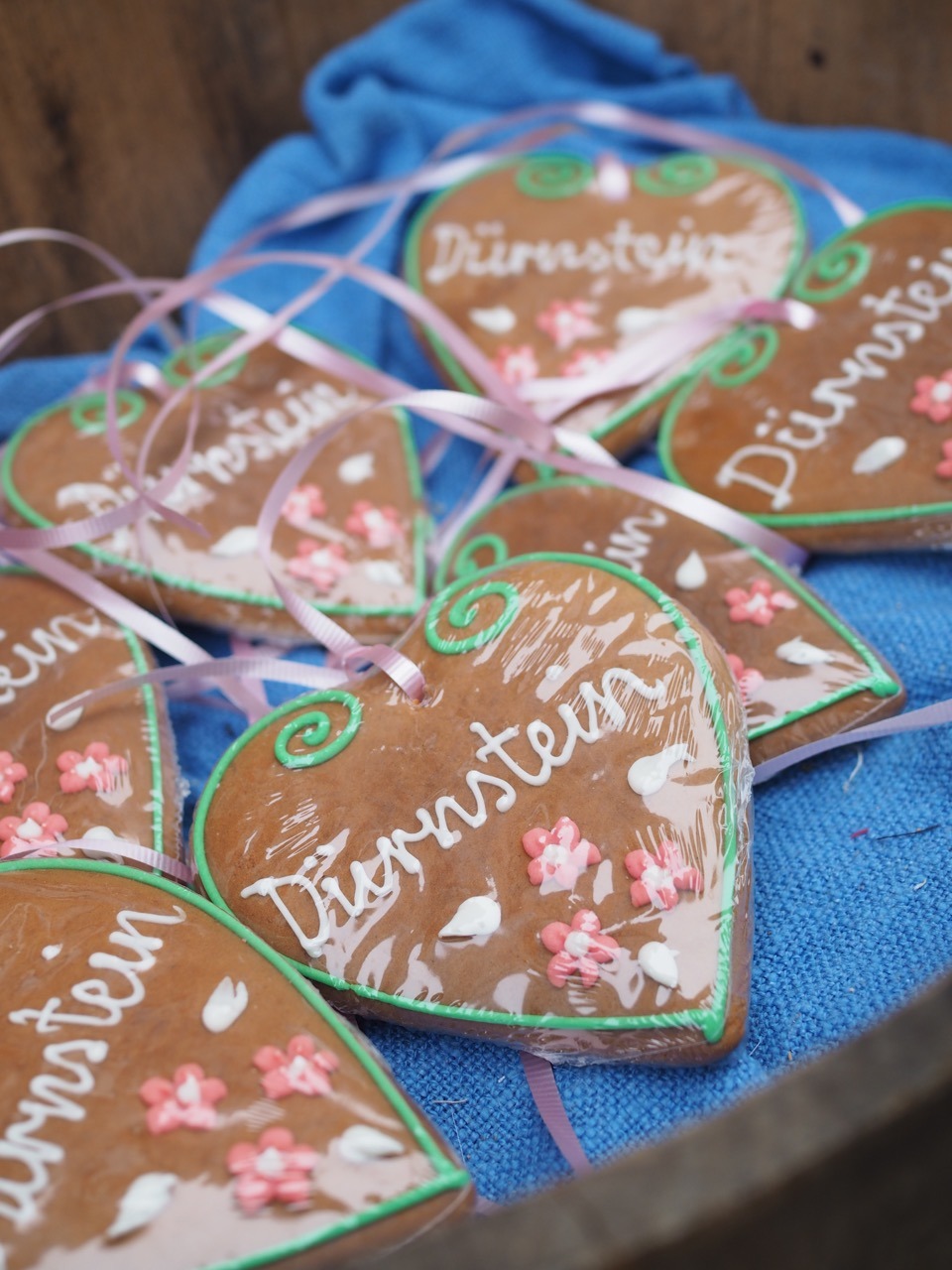 [/right]
[/right]
I didn’t get to see the castle ruins (where Richard the Lionheart was imprisoned in 1192, after insulting Leopold V), as they were completely covered by the fog – what’s the point of hiking so high up if you can’t admire the view, i.e., the only thing that makes hiking a worthy endeavour as far as I’m concerned? But I’ve been told the scenery of the Danube and both of its banks are really quite outstanding on clear summer days.
Inside the Durnstein Abbey
But what really makes Durnstein so popular, besides its gourmet scene, is its striking azure-coloured former Augustinian monastery. Founded in 1410 and later on fitted with dramatic Baroque features, the Chorherrenstift was actually dissolved in 1788 by radical but benevolent Emperor Joseph II as part of Austria’s religious reform. It is now the local church, but if I’m honest, it probably welcomes more tourists than fellow parishioners.
Not that it’s a problem. It’s absolutely gorgeous. See for yourself!


 [left]
[left] [/left][right]
[/left][right]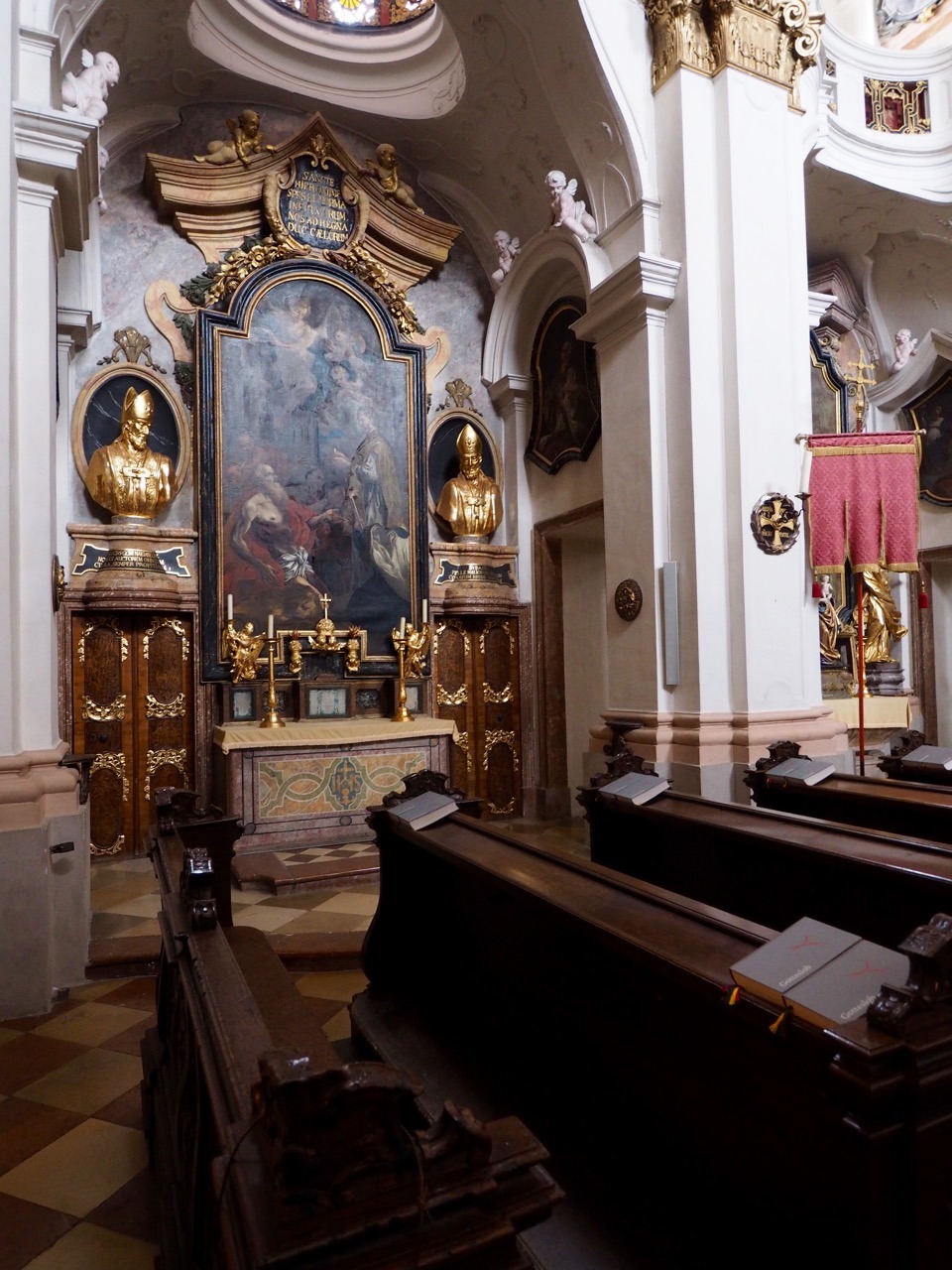 [/right]
[/right]
 [col1]
[col1] [/col1][col2]
[/col1][col2]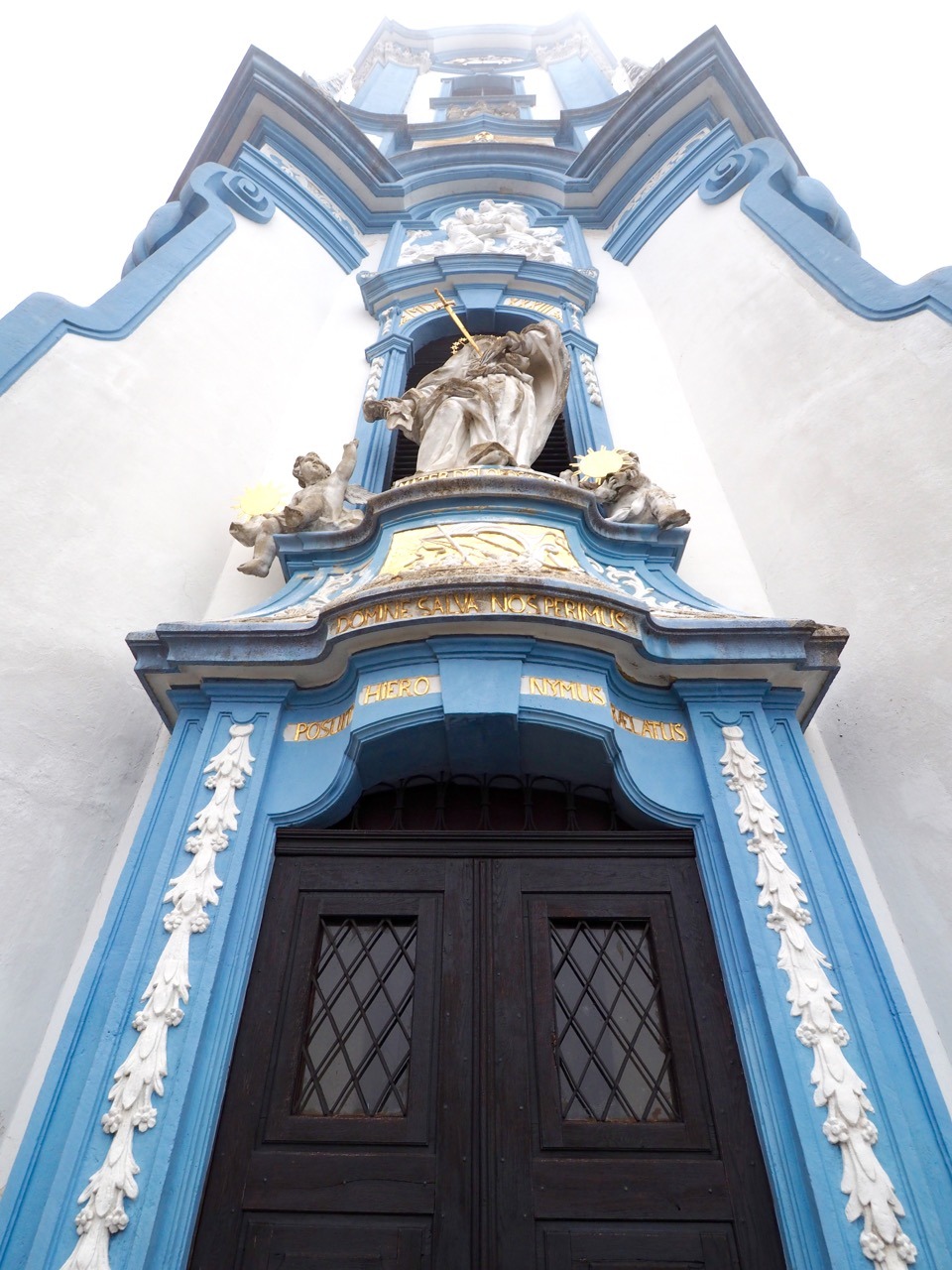 [/col2][col3]
[/col2][col3]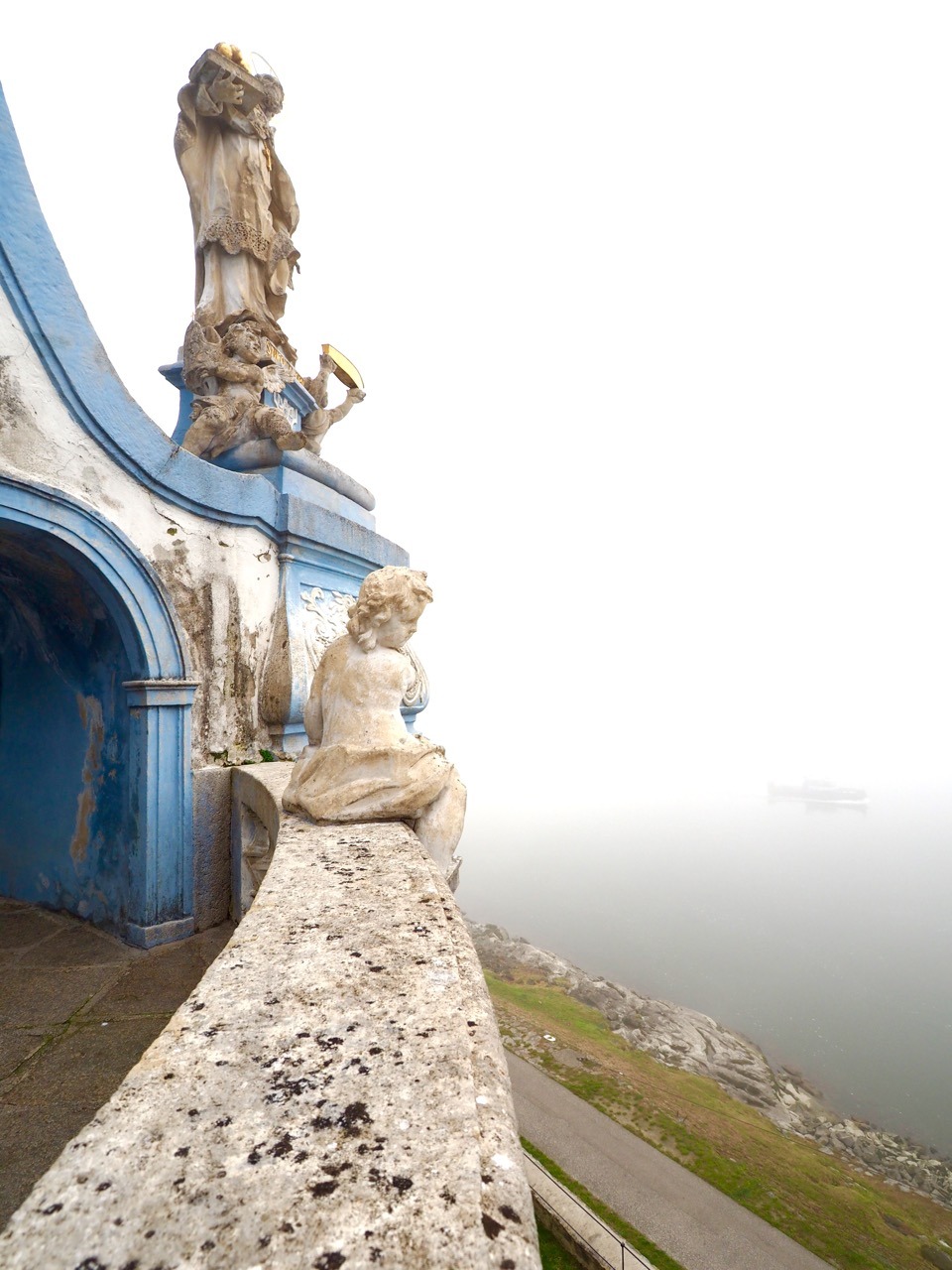 [/col3]
[/col3]
[left]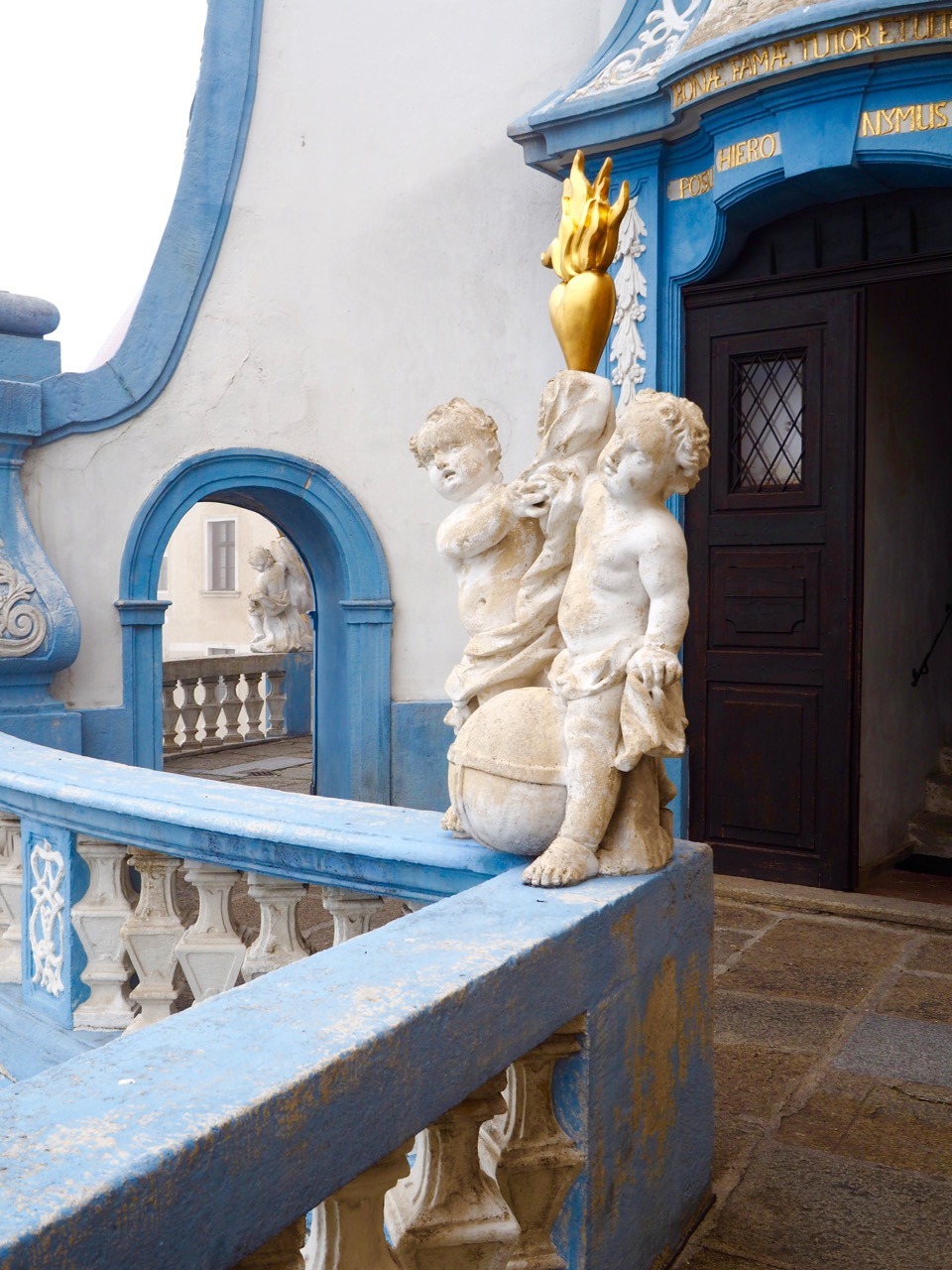 [/left][right]
[/left][right]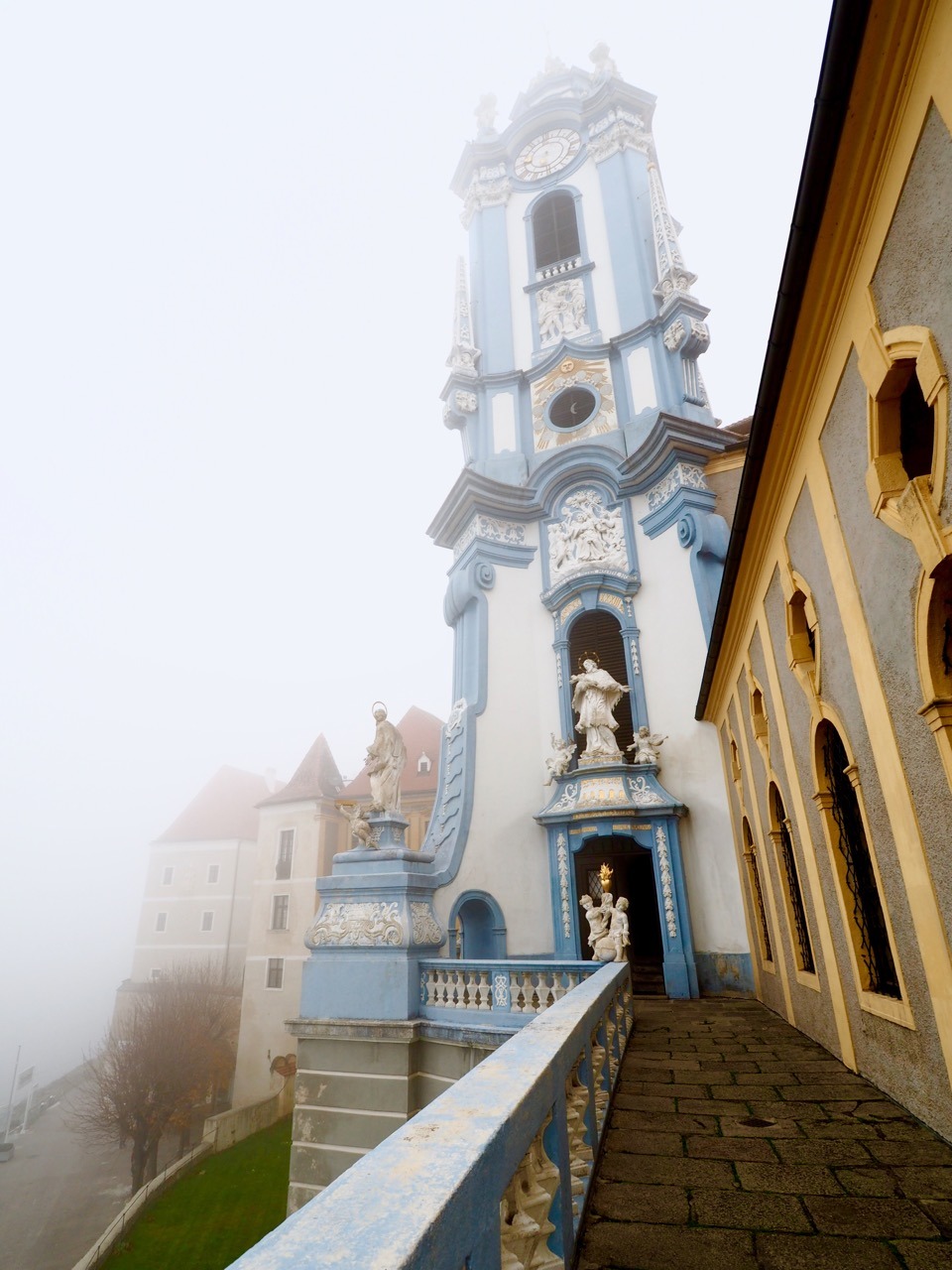 [/right]
[/right]
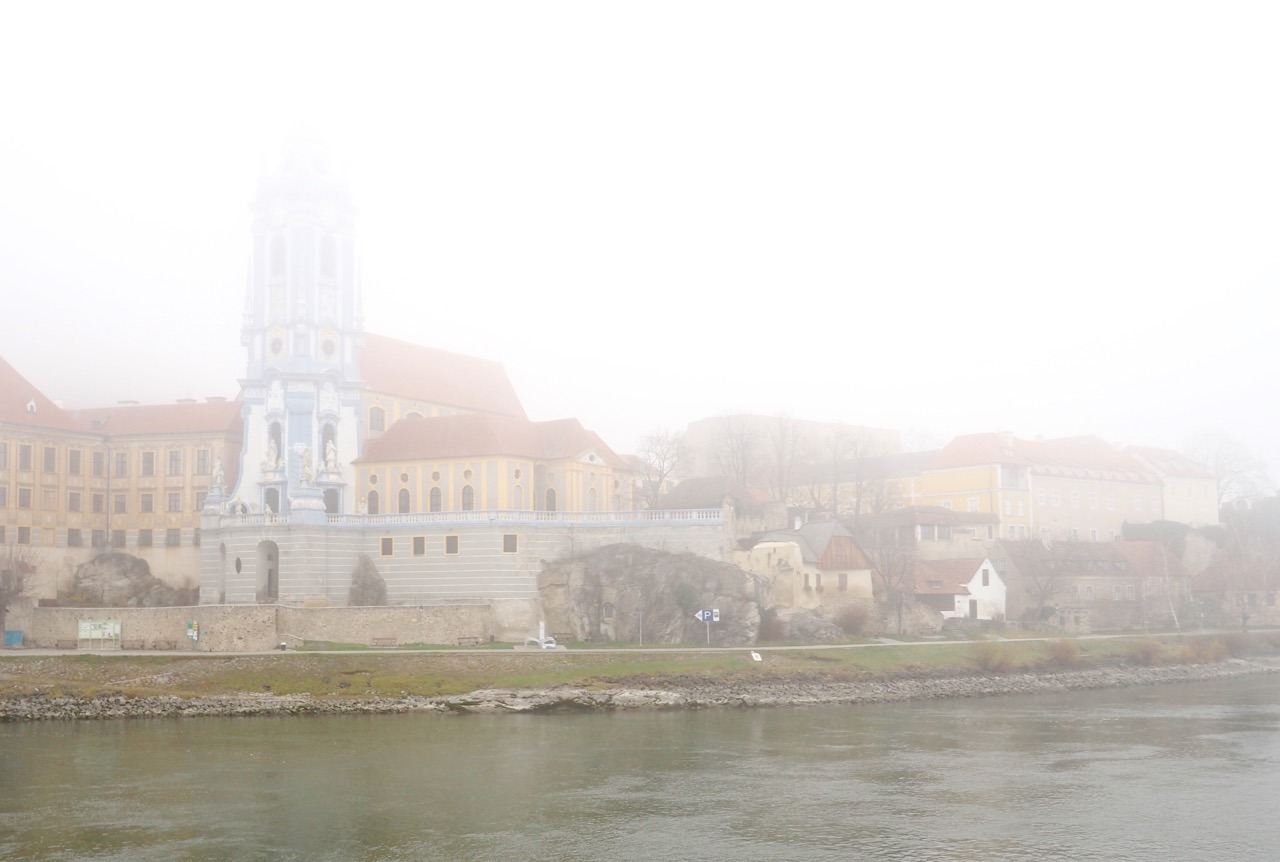
Normally, at this stage, I would include a swoon-worthy photo of the Danube’s scenic Wachau valley, but FOG. And you know what? I’m still glad I put my coat on and went on that walking tour that morning because in the end I got to see the village with an almost unique perspective, one that very few other tourists have had.
Isn’t that what travel is all about? ♥
I visited Durnstein as part of the Danube Waltz expedition with Viking Cruises. All opinions are my own.



